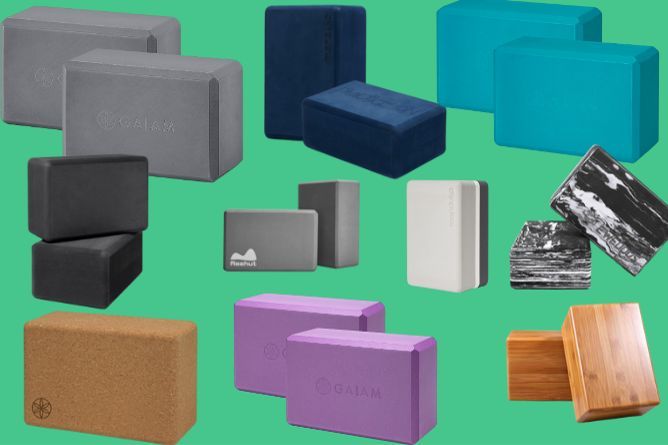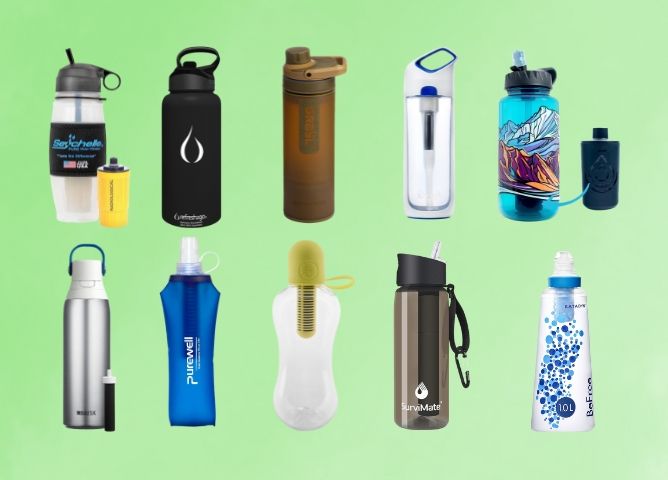In This Article
This post may contain affiliate links, please see our privacy policy for details.
Yoga blocks are an indispensable tool for any yogi, regardless of skill level. Whether you’re a beginner or an advanced practitioner, having the right yoga block can make all the difference in your practice. Beginners may need extra stability or support when attempting harder poses, while more experienced yogis will benefit from deepening their stretches or finding more balance for their postures. This blog post will cover the different types of yoga blocks and why they’re essential for beginners to have in order to get the most out of their practice.
Our Top Picks for the Yoga Blocks
- Cork Yoga Block - Gaiam Yoga Brick
- Foam Yoga Block - REEHUT High-Density Eva Foam Block
- Bamboo Yoga Block - Bamboo Wood Block
- Recycled Foam Yoga Block - Manduka Recycled Foam Yoga Block
- Eco-Friendly Yoga Block - Ewedoos Yoga Block
- EVA Yoga Block - Gaiam Essentials Yoga Block
What Is a Yoga Block?
A yoga block is an essential tool for both beginning and advanced yogis. The blocks are made of foam, cork, wood, or other materials and come in a variety of sizes and shapes. They provide support to assist practitioners in achieving the correct posture for their individual body types.
These blocks can also be used to deepen a stretch or help with balance during difficult poses. With their many uses, yoga blocks are an essential aid for yogis looking to take their yoga practice to new heights.
The Benefits of Using Yoga Blocks
Yoga blocks provide many benefits to yogis of all levels. They can help beginners by providing stability and support in poses that may otherwise be difficult to accomplish.
For more advanced practitioners, yoga blocks can help deepen a stretch or provide more balance when attempting more difficult poses.
Yoga blocks also make certain poses more accessible by allowing the user to adjust the angle and level of difficulty with the block itself. Overall, yoga blocks are a great tool for improving your yoga practice and achieving success in your asanas.
Our Favorite Yoga Blocks
Yoga blocks are an incredibly useful tool for yogis of all levels. From providing support for beginners to allowing more experienced practitioners to deepen their stretches, having the right yoga block can make all the difference in your practice. This blog post will explore the various types of yoga blocks, how they can help enhance your yoga practice, and how to choose the right one for you. Read on to learn more about this essential prop!
Cork Yoga Block
Cork blocks are one of the most popular varieties due to their durability and lightweight construction. They are firm yet comfortable to use, making them a great choice for support and stability.
Cork can be found in various shapes and sizes, allowing practitioners to choose the size and shape that will best fit their needs. The natural properties of cork make it ideal for maintaining perfect alignment while providing enough stability to help with balance and core strength.
They also have excellent grip, making them suitable for dynamic poses as well as more restorative postures.
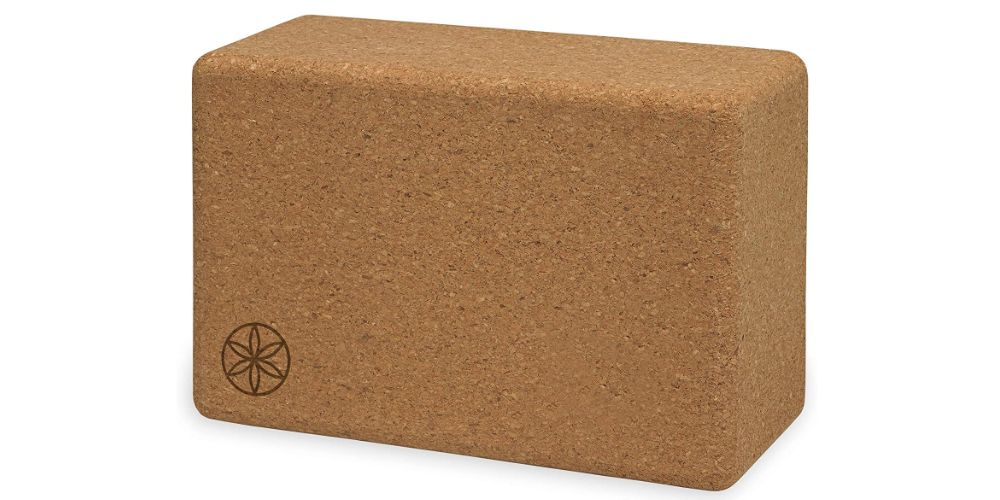
The Gaiam Cork Yoga Brick is an ideal choice for those looking to extend their reach during more challenging poses and increase their balance during stability poses. Made from sustainably-sourced natural cork, it provides sturdy and durable support to keep you safe while helping extend your reach.
Its smooth sanded surface adds comfort, yet provides excellent grip so that you can focus on your practice without slipping or sliding. Plus, its firm cushion makes it a great seat for meditation. Whether you're a beginner just starting out or an experienced yogi looking to take your practice to the next level, the Gaiam Cork Yoga Brick is a perfect companion for any yoga practice!
Foam Yoga Block
Foam yoga blocks are an excellent choice for a beginner's practice because they are lightweight and very affordable. They offer a great amount of stability and comfort, making them the perfect tool for practicing postures safely and effectively.
They also provide good grip, which is essential for dynamic poses that require more balance and controlled movement. The best way to use this type of block is to place it under your hands or feet when needed in order to help you find better alignment, avoid any possible injuries and maintain correct form during your practice.
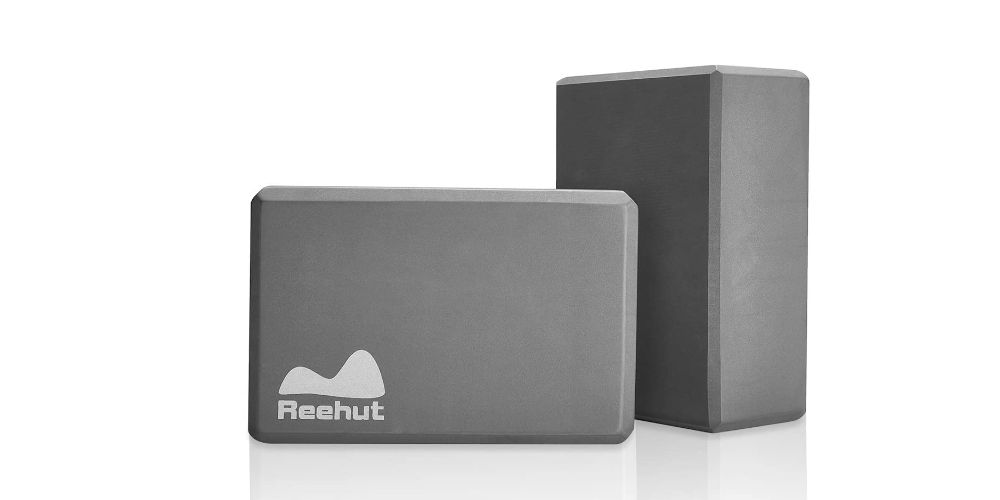
The REEHUT Yoga Blocks are a must-have for beginners looking to deepen their practice. This high-density EVA foam block provides extra support and stability to help improve strength and aid balance and flexibility.
The lightweight design makes them easy to take along with you wherever you practice, while the odor-resistant material ensures that your yoga block stays fresh and clean. With these REEHUT Yoga Blocks, even those new to the practice can enjoy a safe and comfortable experience with every yogi session!
Bamboo Yoga Block
Bamboo wood yoga blocks are a great choice for practitioners who prefer more stability and stability during their practice. They are very sturdy and look great in any home or studio setting.
However, it is important to note that they can be heavier than other materials when in use, so they may not be suitable for those with limitations on weight-bearing movements. Additionally, bamboo wood blocks can be slippery when wet, making it important to use a non-skid mat beneath them to ensure safety and stability during practice.
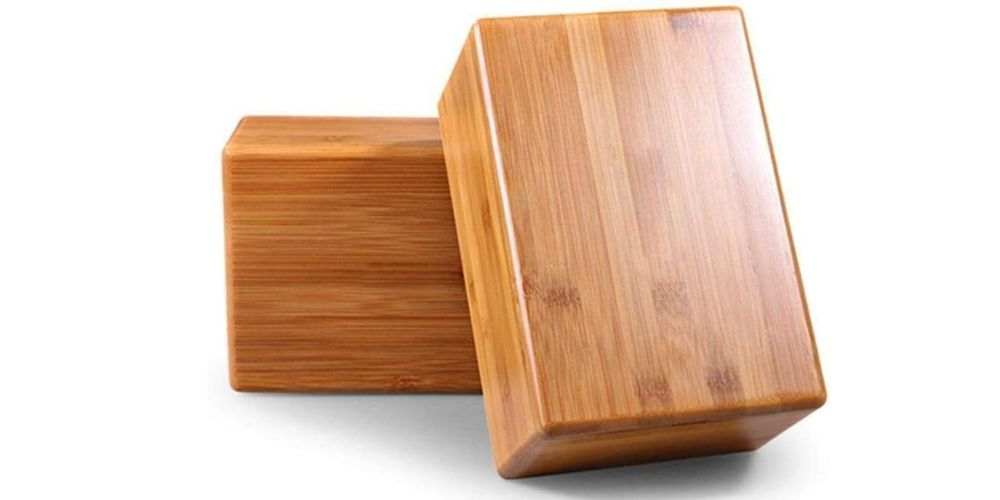
The Bamboo Wood Blocks are the perfect choice for yogis of all levels. Crafted from bamboo wood with a thin coat of lacquer, these yoga cushions provide strong and durable support to help you extend and deepen your stretches and poses.
The circular arc edges offer comfortable to use while the high hardness of up to 85 ensures they won't bend or deform over time. Not only that, these blocks make it easier to feel grounded and supported no matter what type of yoga practice you take part in - whether it be meditation, hot yoga, or Hatha yoga. With these blocks, you'll be able to take your practice to the next level!
Recycled Foam Yoga Block
Recycled foam yoga blocks are a great eco-friendly option for those who want to practice yoga in an environmentally conscious way. They provide the same amount of stability and comfort as regular foam blocks, but with the added bonus of being made from recycled materials.
These blocks also generally have a more textured surface that provides a better grip, thus helping to prevent slips and falls during practice. Additionally, the texture can also help to give practitioners more feedback on their poses so they can better work towards improved form.
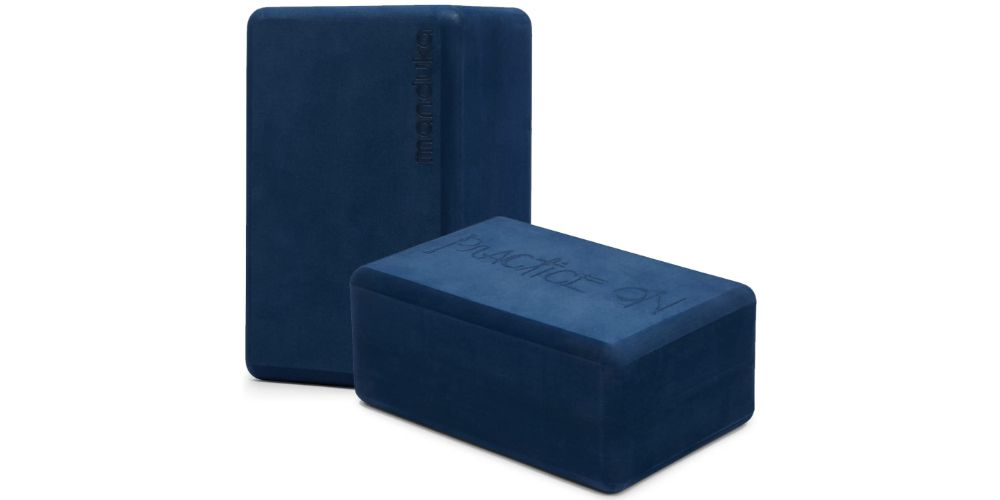
The Manduka Recycled Foam Yoga Block is the perfect way to upgrade your practice. Whether you're a beginner or an experienced yogi, these blocks offer excellent stability and balance with slip-resistant contoured edges for comfort.
The high-density foam is durable and more firm than other yoga blocks, ensuring that you can deepen and extend your stretches without fear of injury or strain. Plus, it's made from recyclable post-industrial and post-consumer EVA foam, making it a great choice for those looking to minimize their environmental impact.
Compact at 9” x 6” x 4” and weighing only 0.9 lbs., this block is lightweight and portable enough to bring along wherever your practice takes you!
Eco-Friendly Yoga Block
Eco-friendly yoga blocks are a great option for those looking to practice yoga in an environmentally conscious way. These blocks are often made from recycled or sustainable materials, making them more eco-friendly than traditional blocks. Not only that, but they can also provide good stability and comfort while practicing.
Additionally, these blocks tend to have textured surfaces which can help provide a better grip as well as give practitioners more feedback on their poses. Eco-friendly yoga blocks are an ideal choice for yogis who wish to combine their love of the craft with a desire to protect the environment.
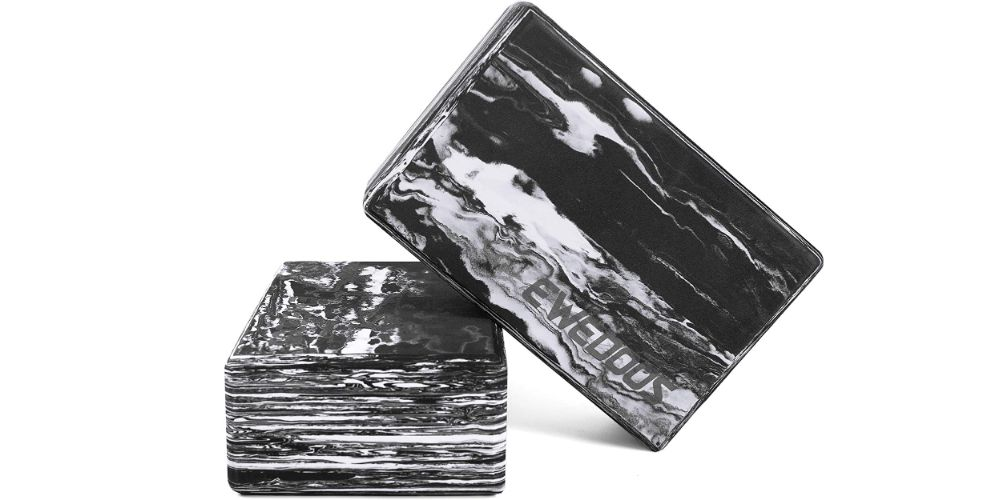
The Ewedoos Yoga Blocks are the perfect addition to your yoga practice. These blocks are eco-friendly, made from high-density EVA foam, and work great in all types of yoga styles – from Meditation to Bikram.
They feature a lightweight design that’s still sturdy enough to provide excellent support and alignment during more challenging poses. In addition, these blocks have slip-resistant contoured edges for comfort and stability and a wide range of vibrant marble patterns for you to choose from.
Whether you’re a beginner or an experienced yogi, these blocks will give you the perfect balance of portability and support!
EVA Yoga Block
EVA Yoga blocks are lightweight, durable, and incredibly versatile pieces of equipment that offer exceptional support in the practice of yoga. Constructed of high-density, closed-cell EVA foam, these blocks are strong enough to hold up through countless sessions. They come in a variety of sizes, colors, and textures - all designed to help you find the perfect support for your body. EVA foam is also eco-friendly, so you can rest easy knowing you're looking after the environment as well as your own physical well-being. From providing balance and stability in poses to helping build strength and flexibility, EVA Yoga blocks offer unparalleled versatility for any practitioner – no matter the style of yoga!
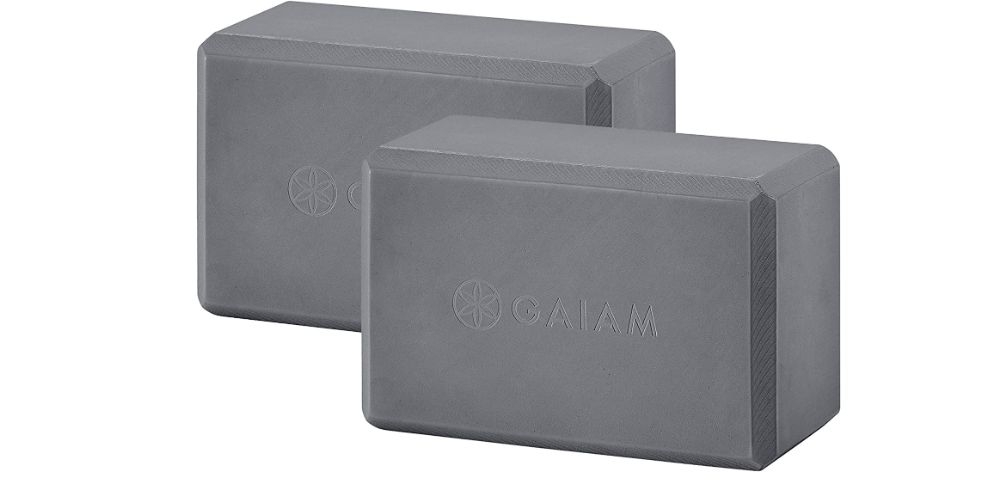
The Gaiam Essentials Yoga Block is the perfect addition to any yoga practice. This lightweight and supportive foam block is constructed from a durable EVA foam, making it 50% denser than standard blocks, and features a non-slip surface and beveled edges for easy gripping.
Whether you're a beginner or an advanced yogi, this block will offer excellent stability, balance, and support in any pose, helping you to maintain proper alignment and reduce injury or muscle strain. With its convenient size and portability, you can take your practice anywhere - at home, the gym, or the studio.
Techniques for Using Yoga Blocks Correctly
When used correctly, yoga blocks can be an invaluable tool in advancing your practice. Whether you’re just starting out and need additional support to deepen a pose, or are an experienced practitioner looking for finer alignment, using yoga blocks is the perfect way to achieve your goals.
From helping with balance and proper positioning to providing a stable base for more complex poses, there are many techniques to help you get the most out of your practice with these versatile tools. By keeping these key strategies in mind, you can ensure that each time you use them they will help you reach even further into the depths of your poses.
How to Use the Block as a Prop for Poses and Stretches
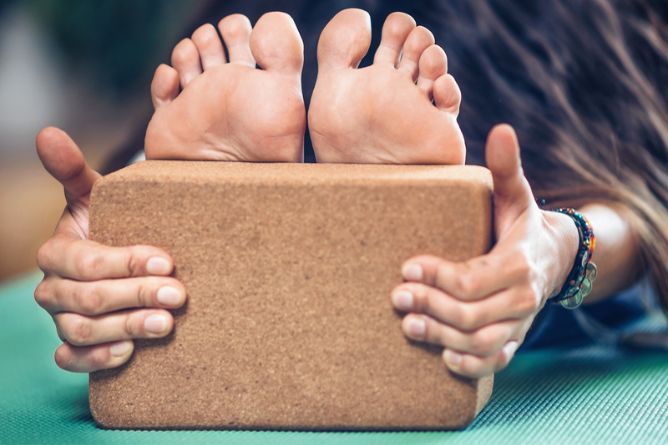
Using yoga blocks as a prop can be incredibly helpful for stretching and deepening poses, particularly those which involve balancing. By holding onto the block while in your pose, you can focus on stability while being able to adjust the position of the block in order to provide additional support. This is especially effective when you are attempting more challenging postures or just beginning to practice.
Additionally, if a posture requires you to hold onto something for balance, then using a yoga block offers an even better option that helps with alignment and supporting yourself during deeper stretches. In any case, having one (or two) blocks handy will make all the difference when taking your practice up a notch!
How to Engage Your Core While Using the Block
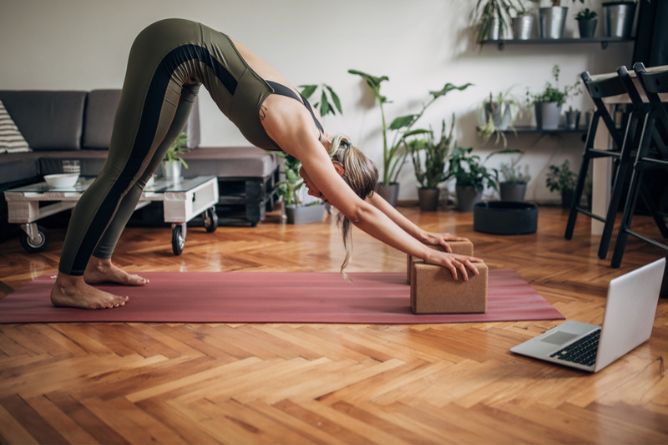
Engaging your core is an essential part of achieving optimal balance and alignment when practicing yoga. This can be particularly difficult if you’re using a block to support yourself in a pose, as it can be easy to forget about engaging your abdominal muscles.
However, doing so will help ensure that the block remains in place while also providing you with more stability. To engage your core while using the block, focus on pulling your belly button towards your spine and draw your lower ribs into the body. This will not only help you maintain good posture, but it will also encourage proper breathing during each pose or stretch.
Tips on Proper Alignment When Using a Block
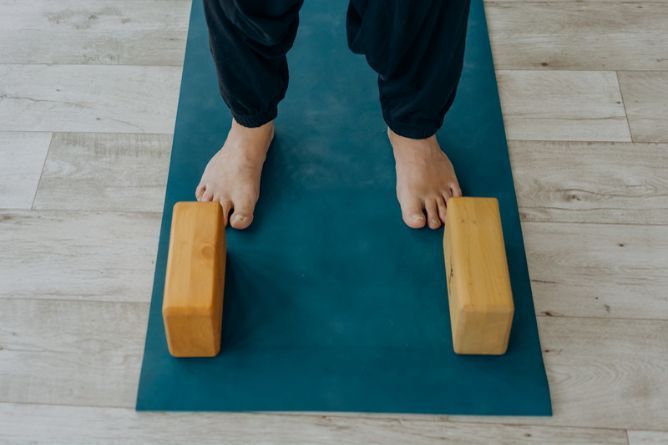
When using blocks as a prop in your yoga practice, it's important to ensure that you are properly aligned. This will not only help you get the most out of each pose or stretch, but it will also help prevent injury.
To ensure proper alignment, start by positioning your block directly under the area of your body that needs support. Then, use your breath to draw your attention towards the center line of your body and adjust the block accordingly until you feel supported but still challenged. Finally, make sure that you’re not putting too much pressure on any one area— such as your wrists or shoulders—and adjust accordingly if needed.
Through proper alignment and focus on breathing, you'll be able to get the most out of every move while keeping yourself safe and healthy!
Guidelines for using the right size block for your body type
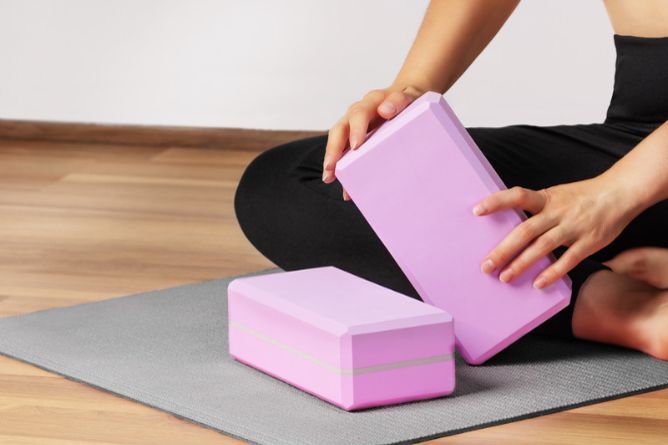
When using blocks in your yoga practice, it's important to make sure you use the right size block for your body type. Too large a block can make poses more difficult than they need to be, while too small a block can leave you feeling unsupported and unbalanced.
To determine what size of the block is best for you, start by assessing the height of your hips and torso. Your ideal block should measure about two-thirds (2/3) of this distance from the floor to the hips or from the hips to the shoulders.
Remember that with most yoga blocks, the measurements refer to thickness; if there is a tapered design, ensure that the shorter end falls within your desired range for support. With these guidelines in mind, you'll be able to select the best size block for you and get the most out of every stretch!
Different ways to incorporate blocks into various yoga practices (restorative, vinyasa flow, etc.)
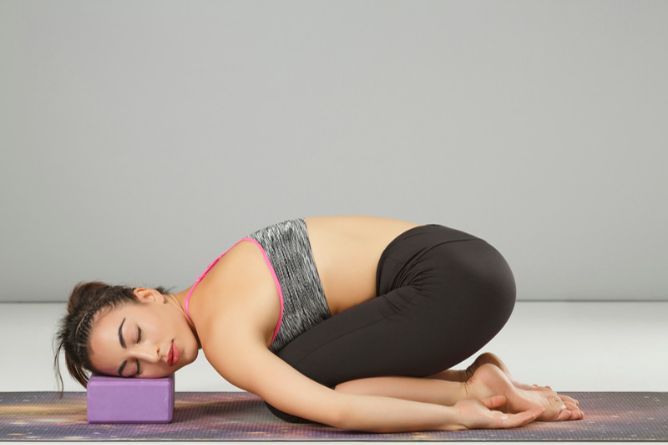
Take your yoga practice up a notch with blocks! Blocks help provide extra weight in more complicated postures that require longer holds so don't strain yourself; as well as offer an opportunity to open up chest muscles for backbends and strengthen lower-intensity poses.
Whether you're doing restorative, vinyasa flow, or any other type of yoga - adding block support to poses like mountain pose and left foot can level-up the intensity while increasing stability.
In restorative yoga, use blocks to support your body weight in poses that require longer holds so you don't strain yourself. In vinyasa flow, use blocks to elevate your practice as they can help you reach further and deepen stretches.
Additionally, incorporating blocks into lower-intensity poses offers an opportunity to strengthen muscles and increase balance. From providing stability during standing postures to helping open up your chest in backbends, getting creative with blocks is a great way to take your practice to the next level!
Best Yoga Blocks FAQ
If you’re unfamiliar with how to choose the best yoga blocks for your practice, then this FAQ is for you! Yoga blocks are an essential accessory for any yogi, as they make poses much easier to perform, provide extra stability and support when needed and help achieve proper alignment. Read on to discover the answers to all your questions about choosing the best yoga blocks for your practice.
How do I choose the right type of yoga block for me?
When it comes to choosing the right block for your practice, there are a few considerations to take into account. First, think about what level of yoga you’re practicing and the poses you enjoy doing. This will determine the size and firmness of the block that would best suit your needs.
Additionally, look at how much support you need in order to stay comfortable and safe during your practice. Finally, if you’re a beginner or if you want extra cushioning, opt for a foam or cork block instead of wooden blocks. With these tips in mind, you’ll be able to find the perfect yoga block for your practice!
Where can I buy yoga blocks?
It’s easy to find yoga blocks for sale online and in local stores. Most major retailers and online stores like Amazon, Walmart, Target, or Dick's Sporting Goods carry a variety of blocks at affordable prices. For higher-quality blocks, look for specialty retailers that specialize in the sale of yoga supplies. Many independent sellers also offer their own unique designs and materials, giving you a greater range of options to choose from when it comes to finding the perfect block for your practice.
How should I store my yoga blocks when not in use?
Yoga blocks should always be stored in a safe and secure place to prevent them from being damaged. When not in use, store your blocks in a cool and dry location away from direct sunlight or moisture. If possible, place them in a bag or container to keep dust and other debris off of them.
It's also important to check the integrity of the block before each use and make sure there are no cracks or breaks that could compromise its durability during practice. With these tips, you can rest assured your yoga blocks will stay safe and last for many years!
What are yoga blocks used for?
Yoga blocks are an essential piece of equipment for any yoga practice. They provide support and stability, allowing practitioners to comfortably move into poses they would not otherwise be able to reach. Blocks can also be used as a prop to help deepen stretches and enhance postures.
Additionally, they can serve as a base for balance and strength exercises, helping you further your practice with greater precision. Yoga blocks come in different sizes and materials, so depending on your individual needs, you can find the perfect block to help you get the most out of your practice.
How to use yoga blocks?
Using yoga blocks is an excellent way to deepen and refine your poses. To begin, place the block where desired in your pose, and use it as a support or prop to help with balance or alignment. For standing leg poses, hold onto the block while stretching into the posture.
You can also use blocks as a guide for more complex poses like twists and backbends, as they will provide you with a set point of reference. Finally, you can even sit on the block in order to ensure proper alignment throughout seated postures. With these tips and some practice, you will soon be able to explore the potential of using yoga blocks in your practice!
Final Thoughts
We hope that our selection of yoga blocks has provided you with the information you need to find the perfect block for your practice. With these choices, we hope that you can find a block that fits your needs and assists in taking your yoga practice to the next level. Whether it be for stability, support or balance, there is a type of block to help you find your flow and unlock the full potential of each pose. Enjoy!


